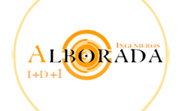Publications
Technology MHP (Multimedia Home Platform) was originally adopted in February 2002 as a standard for developing
interactive and multimedia applications of DTT in the DVB Project (Digital Video Broadcasting, http://www.dvb.org). MHP is a shortened version
of the Java virtual machine, which extends a set of features to adapt to the digital TV environment. Interactive applications are called
Xlets, and transferred by diffusion and cyclical (like teletext).
From the standpoint scientific-technical, currently there are no development methodologies and business models clearly extended and normalized.
In the past two years has been shown the proliferation of congress and days, as the IV International Congress TDT (ProTDT 2009),
the V International Forum of Terrestrial Digital Television, the SATexpo 2009 congress, the Workshop on Digital Television and
Mobile Multimedia Broadcasting , to name just a few of them.
Many are also public projects and/or private developed in recent months in developing of knowledge of interactive services for
terrestrial digital television. For example, some of the most interesting are: Inspira 2, a project developed by Mirada, RTVE,
Abertis Telecom (Retevisión) and UPM for the development of new interactive services in the field of DTT from the study of
qualitative marketing made with real users in several Spanish cities, Identifica-T, a RTVE project and Indra to use the
Electronic Identity National Document through MHP interactive applications in the DTT, giving users the access to Information
Society and e-Administration; Arca, a project of RTVE, Telvent Housing and UPM, to consult the traffic information (catch and videos)
of cameras located in different parts of capital Madrid; Iberoeka DESI, a joint project between INDRA, SIDSA, LambdaStream and UPM,
to develop and deploy services for DTT and IPTV. Conducted a pilot using MHP 1.2, with two games and a t-learning application with
streaming video on the return channel; Si! Tvi, formed by IECI and Net2U_, for the authentication of users in interactive applications
for Terrestrial Digital Television by DNIe.
Software Engineering
The global implementation of Digital Television, in addition to providing a higher
quality in the emission and number of channels, has encouraged the emergence of a number of technologies
that promote the establishment of new business models and their interaction with Internet. There have
been several attempts to clarify and develop a technique of interaction of DTT with Internet, as in
[Amerini et al., 2009] [Clarasó et al., 2009] [Gallego et al., 2008] [Melendreras-Ruiz, 2008], but none
of them is subject to well-defined and normalized development methodologies.
The mediation models (traders) have been successful in development of component-based software (DSBC).
The DSBC is a discipline of software engineering to describe, build and use software techniques for the
development of open and distributed systems by assembling reusable software parts, and in many cases built
by third parties and for different purposes (this software known as commercial software or COTS, Component
Off-the-Shelf) [Meyers and Oberndorf, 2001]. Current information systems are based on client / server, multi-layered
architectures, paradigms of distribution (CORBA), standards and important safety techniques, technologies of
modeling of XML documents, Web services composition, followed, in many cases, methodologies development based
on third-party components (COTS), as is the focus of this project. In the literature of software engineering
are numerous works dealing methodologies, methods and techniques for developing COTS-based software, as in
[Wallnau et al., 2002] [Meyers and Oberndorf, 2001] [Heineman and Councill, 2001] . In [Iribarne et al., 2004]
develops an experiment configuration and composition of commercial components of a Service Geographic Image
Conversion (GTS).
For configuration and composition of components has played an important role in the progress of mediation services
(traders) and managers of XML repositories and XQuery query engines. A mediation service is like a yellow pages
service that allows customers (object oriented) in a distributed system, can identify, from a search attributes and
run time, the services they need. In 2000, OMG (Object Management Group) proposed CosTrading [OMG, 2000], the mediation
service of CORBA distributed model (Common Object Request Broker Architecture). Inspired by the mediation model GMOs,
has developed a mediation model for commercial components (COTS) in open distributed systems [Iribarne et al., 2001-2004],
and then integrated into a spiral-based methodology for software development based on COTS [Iribarne et al., 2005]. We have
also developed a trader in the SOLERES project, WebTrader Agent (http://www.ual.es/acg/soleres) [Asensio et al., 2008-2009],
[Iribarne et al., 2008], [Padilla et al., 2008]. The developed traders have based on technologies of management of repositories
XML/Xquery.




